
Seasonal Math Games
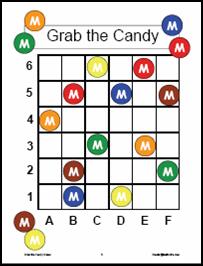

Planning Distributed Practice of Math Facts and Skills
Teachers use a variety of strategies to help students through this high-activity time of year with holidays, assemblies, absences, field trips, etc. Every class needs some structured practice time to accommodate these schedule changes and allow teachers to work with small groups.
Math games are a wonderful resource for this hectic time of year as students play in pairs or small groups to practice math facts and skills. Teachers may easily differentiate the practice to best meet the varied needs of learners.
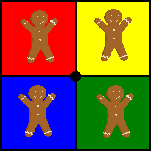
Choose games to provide distributed practice of math facts or skills, such as coordinate graphing. Games used in conjunction with data collection also help students develop the important concepts of probability as they analyze the data they collected and formulate conclusions based on that data. The simplest primary games may easily be used as data collection activities for middle school students who still enjoy holiday activities.
- Check out the Mathwire
 Grab the Candy Game which develops coordinate graphing skills as students try to win the most candy. Use this game in conjunction with the M&M data collection activities commonly used throughout the year.
Grab the Candy Game which develops coordinate graphing skills as students try to win the most candy. Use this game in conjunction with the M&M data collection activities commonly used throughout the year.
- The
 Catch the Gingerbread Man game also practices coordinate graphing skills.
Catch the Gingerbread Man game also practices coordinate graphing skills.
- The Mathwire
 Run, Gingerbread Man, Run Game was designed to introduce younger students to the randomness of spinners [pictured at left] and dice. Although each gingerbread man has the same probability of winning, students will experience the randomness as they play. Data collection is built into the game to facilitate class discussion of results.
Run, Gingerbread Man, Run Game was designed to introduce younger students to the randomness of spinners [pictured at left] and dice. Although each gingerbread man has the same probability of winning, students will experience the randomness as they play. Data collection is built into the game to facilitate class discussion of results.
Additional Math Game Resources
- Look through all of the Mathwire
 Seasonal Math Activities for more winter math activities and games.
Seasonal Math Activities for more winter math activities and games.
- Be sure to also bookmark the Mathwire
 Math Games collection as a resource for math games organized by math standards.
Math Games collection as a resource for math games organized by math standards.
Mathwire Winter Math Activity Collections
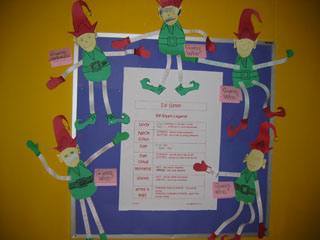
The Winter 2005, 2006 and 2007 collections include activities to address math standards and integrate with seasonal themes. Teachers will find games, math-literature connections, data collection ideas, and internet links to additional winter math activities. There's something for every classroom in these collections!
Mrs. Bestle's class at Port Monmouth Road School in Keansburg, NJ, made elf glyphs to display on the hall bulletin board. They challenged other students to guess who was who.
- Check out the Mathwire
 Seasonal Math Activities for links to the Winter Math Activity Collections.
Seasonal Math Activities for links to the Winter Math Activity Collections.
- Download the legend and patterns for the
 Elf Glyph, pictured on the right.
Elf Glyph, pictured on the right.
Mathwire Theme Math Activity Collection: Gingerbread Men
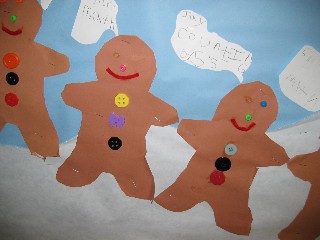
|
This collection of Gingerbread Man Math Activities includes Mathwire.com activities from the Winter 2005 and Winter 2006 collections: links to gingerbread man glyphs, math-literature connections and links to gingerbread man collections on the web. The collection also includes several new Mathwire activities: measurement activities, gingerbread man math mats, gingerbread man graphing ideas, two new gingerbread man games and some new gingerbread man problem solving tasks. Check out the |
Gingerbread Coordinate GraphingRemember to include the |
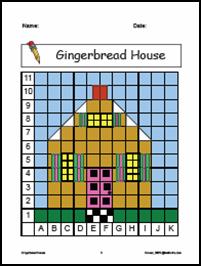
|
Featured Game: M & M Probability Game
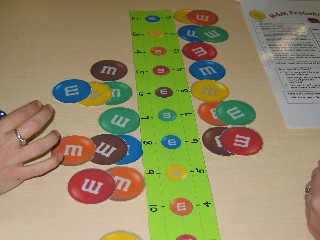
|
Students place M&M markers on the numbers 2-12. Students may place one M&M marker on each number or place several on some numbers and leave other numbers blank. Next, students toss two 6-sided dice, find the sum, and remove an M&M marker from that number, if there is still one. The first player to remove all markers wins the game. NOTE: This game was developed by Susie Siegel who currently teaches fourth grade at Irwin Elementary School in East Brunswick, NJ. Ms. Siegel created M&M markers on the computer and used sentence strips for the gameboard, as pictured. She also designed a recording sheet students could also use to play the game and record data. Read more about the |

Strategy of the Month: Helping Students Develop Basic Facts Fluency

Every math teacher struggles to find ways to encourage students to master their basic facts. Whether for addition and subtraction facts or for multiplication and division facts, teachers collect many ideas from which they can draw activities to meet the varied needs of learners in their classes. Games and Who Has? activities are especially motivational and continual play can help students develop fact fluency in an effort to master the games and capture the most points.
Many teachers include a weekly "Game Day" in math classes. On this day, student groups cycle through activity centers that include games to develop fact fluency and/or practice important math skills. This day also typically includes small group instruction centers where students meet with the teacher(s) for remediation or enrichment. Including this regularly scheduled "Game Day" is a win-win strategy for teachers and students as it provides opportunities to differentiate instruction to meet the varied needs of learners in any math classroom. If this is not a regular part of your classroom instruction, consider adding this day during December on a trial basis. You may be surprised at how much you and your students learn on this Game day. As the saying goes, What we learn with pleasure, we never forget.
- Read more about
 Basic Facts Fluency for additional suggestions and strategies.
Basic Facts Fluency for additional suggestions and strategies.
- Check out the Mathwire
 Who Has? Activities Collection for Who Has? decks ready to download and print out on labels for use in your classroom.
Who Has? Activities Collection for Who Has? decks ready to download and print out on labels for use in your classroom.
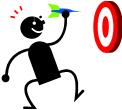
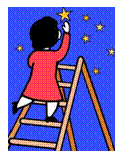
Tip of the Month: Use Climb the Ladder to Develop Number Sense
Some students need prompts to help them write mathematical expressions for target numbers. Climb the Ladder is an activity that prompts students to move from all addition or subtraction problems and include many mathematical topics to generate equivalent names. The student starts at the bottom of the ladder and completes the first rung using the prompt provided. He/she then moves up to the next rung, etc. and works to complete as many rungs as possible in the allotted time. The teacher may also include a traditional name-collection box for students to use after they reach the top so that they continue to generate equivalent expressions of their choice. Many students write more diverse mathematical expressions as a result of using this prompted approach.
- Read more about using
 Climb the Ladder as a regular number sense activity and download templates for student use.
Climb the Ladder as a regular number sense activity and download templates for student use.

Recent Additions to Mathwire.com
Check the  New on Mathwire.com webpage to see what's new on the site this month.
New on Mathwire.com webpage to see what's new on the site this month.
Check the  Recent Additions to Mathwire.com webpage to see the most recent additions to the site this month.
Recent Additions to Mathwire.com webpage to see the most recent additions to the site this month.
Enter your email address below to receive notifications when new content is added to Mathwire.
NOTICE: If you have already subscribed to the Mathwire.com Updates but have not been receiving any notices, this may be due to your school's e-mail system that does not allow these mailings to be delivered. Please feel free to resubscribe using a different e-mail account rather than your school account.
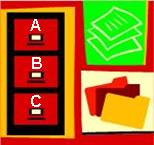
Mathwire Search Options
New to Mathwire.com? There are several ways to search the site for activities by Math Standard, Math Topic, or using an alphabetical search.
- See
 Searching the Mathwire.com Site for a thorough explanation of these search options.
Searching the Mathwire.com Site for a thorough explanation of these search options.
About Mathwire.com
Mathwire.com is designed to provide activities and appropriate worksheets for teachers to use in their classrooms. All activities and worksheets support the constructivist approach to learning mathematics and the NCTM Standards.
Activities: The activities on this site were developed by Terry Kawas and the teachers in districts where she has worked as a math consultant and coach or with students she has taught in college math-methods courses. The activities are classroom-tested by teachers and appropriate modifications have been made to reflect this field-testing. These activities are posted online in an effort to share quality activities and routines within the mathematics community.
Terms of Use: Teachers are welcome to download any of the activities for free use in their classrooms. No activities may be copied for use on other websites or included in commercial products without permission in writing from Terry Kawas, webmaster. Contact Terry Kawas

